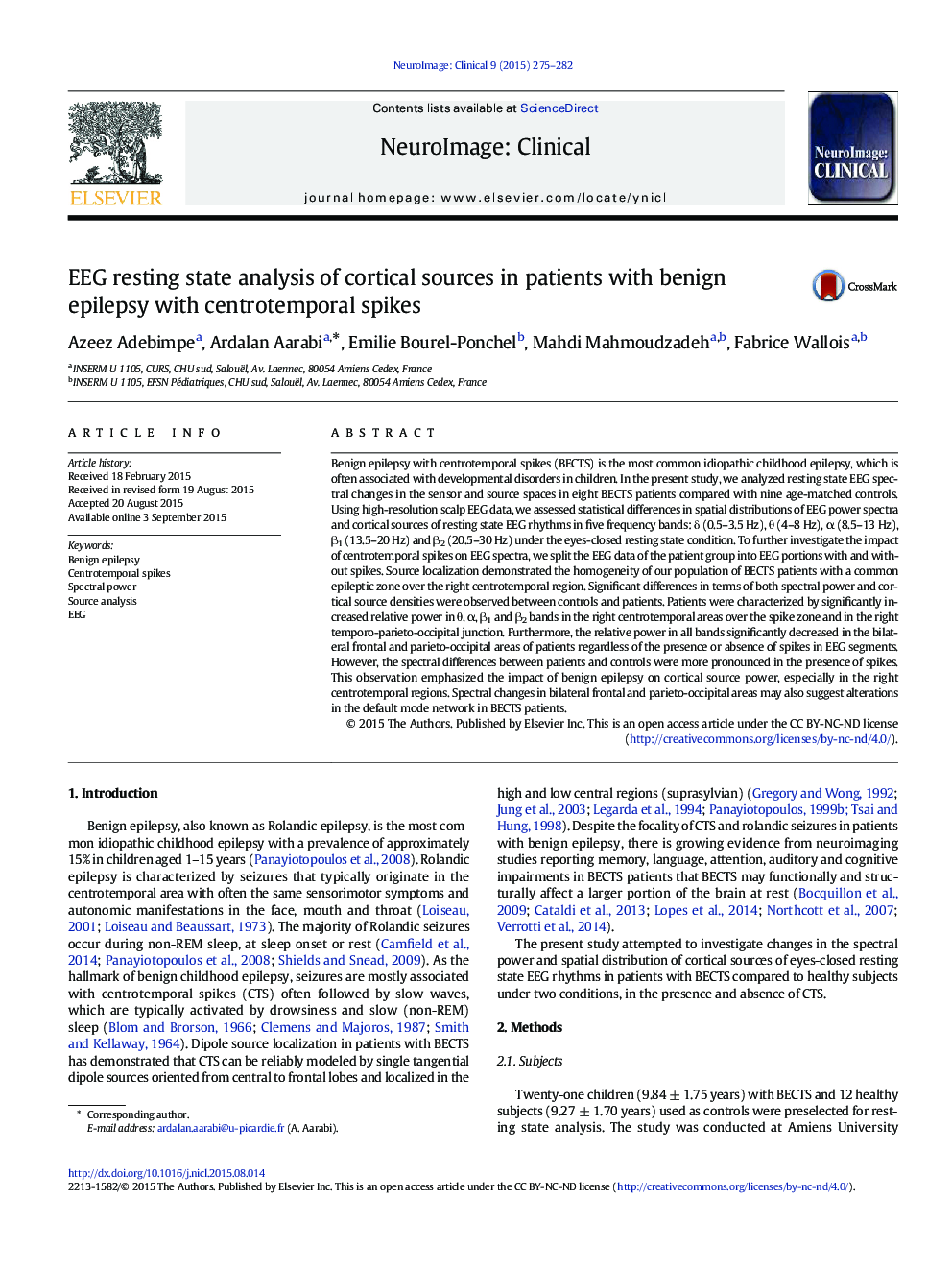| Article ID | Journal | Published Year | Pages | File Type |
|---|---|---|---|---|
| 3075176 | NeuroImage: Clinical | 2015 | 8 Pages |
•BECTS patients exhibited enhanced θ activity over all cortical regions.•BECTS patients displayed reduced α activity at the occipital regions.•Patients showed increased power in θ, α, β in right temporo-parieto-occipital pole.•EEG spectral changes in BECTS patients indicate dysfunction at the epileptic zone.•EEG spectral changes in BECTS patients may show alteration in default mode network.
Benign epilepsy with centrotemporal spikes (BECTS) is the most common idiopathic childhood epilepsy, which is often associated with developmental disorders in children. In the present study, we analyzed resting state EEG spectral changes in the sensor and source spaces in eight BECTS patients compared with nine age-matched controls. Using high-resolution scalp EEG data, we assessed statistical differences in spatial distributions of EEG power spectra and cortical sources of resting state EEG rhythms in five frequency bands: δ (0.5–3.5 Hz), θ (4–8 Hz), α (8.5–13 Hz), β1 (13.5–20 Hz) and β2 (20.5–30 Hz) under the eyes-closed resting state condition. To further investigate the impact of centrotemporal spikes on EEG spectra, we split the EEG data of the patient group into EEG portions with and without spikes. Source localization demonstrated the homogeneity of our population of BECTS patients with a common epileptic zone over the right centrotemporal region. Significant differences in terms of both spectral power and cortical source densities were observed between controls and patients. Patients were characterized by significantly increased relative power in θ, α, β1 and β2 bands in the right centrotemporal areas over the spike zone and in the right temporo-parieto-occipital junction. Furthermore, the relative power in all bands significantly decreased in the bilateral frontal and parieto-occipital areas of patients regardless of the presence or absence of spikes in EEG segments. However, the spectral differences between patients and controls were more pronounced in the presence of spikes. This observation emphasized the impact of benign epilepsy on cortical source power, especially in the right centrotemporal regions. Spectral changes in bilateral frontal and parieto-occipital areas may also suggest alterations in the default mode network in BECTS patients.
